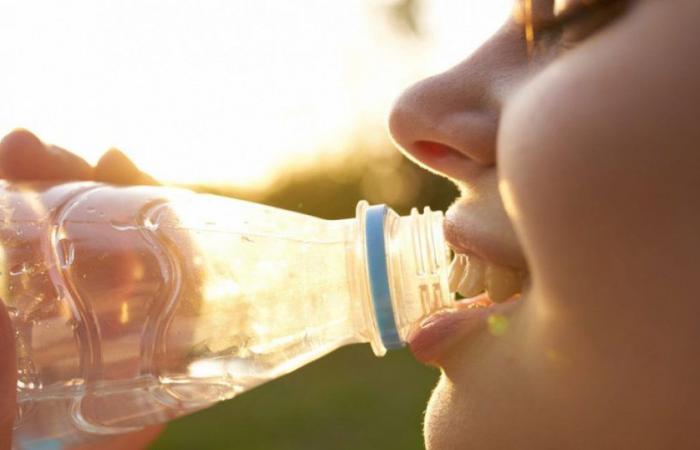Water is synonymous with life, while plastic is synonymous with pollution but also with practicality, so much so that their combination hides a disturbing truth that can threaten our health in an insidious way. Imagine an everyday scene: on a hot summer day you decide to sip some water to cool down, you don’t have your water bottle and you decide to buy a bottle of water. Or maybe another drink. But what seems like an innocent gesture could hide a hidden danger, a silent threat that could alter your life forever. Some recent studies have in fact revealed a worrying link between plastic bottles and the increased risk of developing type 2 diabetes. But is it a real risk? Or just speculation? We just have to go and discover it together.
Link Between Plastic Bottles and Type 2 Diabetes? What a New Study Says
Let’s go in order and start from the beginning. A new study appears to have revealed a disturbing link between plastic bottles and an increased risk of type 2 diabetes. Published in the prestigious journal Diabetesthis research appears to have found direct evidence linking a key chemical ingredient, the bisphenol A (BPA), commonly used to produce food and drink packaging (such as plastic bottles), to a decrease in sensitivity to insulin, an essential component in regulating sugar metabolism in our body.
BPA is a controversial chemical that has long been the subject of debate over its potential negative effects on human health. However, this study provides new, concrete evidence of its specific impact on blood sugar regulation. According to the researchers, BPA can interfere with the functioning of insulin, the hormone that allows the body’s cells to absorb glucose from the blood, thus maintaining stable sugar levels. Exposure to BPA could therefore compromise this delicate function, increasing the risk of developing it type 2 diabetes.
The results of the study, which will be presented at the 2024 American Diabetes Association Scientific Sessions, raised serious concerns about current safety limits for BPA exposure. Scientists involved in the research have in fact urged the US Environmental Protection Agency (EPA) to review existing regulations, suggesting that current limits may not be sufficiently protective for public health.
The study involved 40 healthy adults who were given a daily dose of 50 micrograms of BPA per kilogram of body weight, an amount currently considered safe by the EPA. A control group received a placebo. After just four days, participants exposed to BPA showed a reduced insulin sensitivitywhile the placebo group showed no significant changes.
Are there other diseases carried by plastic bottles?
In addition to the risks already discussed related to bisphenol A (BPA) and type 2 diabetes, there is another level of concern regarding microplastics and nanoplastics present in plastic bottles that we use every day. These tiny particles, no larger than 5 millimeters, can be released over time, especially if the bottles are exposed to high temperatures or direct sunlight.
The implications of this release are still the subject of intense research. Initial investigations suggest that Microplastics could negatively affect our health in several ways. One major concern is their ability to interfere with normal nutrient absorption in the human intestine. Microplastics could act as adsorbent agents, capturing essential nutrients and compromising their assimilation into the body.
Furthermore, there are indications that microplastics may induce an inflammatory response in the body and contribute to oxidative stress, a process that can lead to cellular damage and increase the risk of chronic diseases. A potential inflammatory effect that becomes particularly worrying for people already predisposed to inflammatory conditions such as arthritis or autoimmune diseases.
Another issue that causes some concern is the ability of microplastics to cross biological barriersentering the bloodstream and accumulating in vital organs such as the liver, kidneys, and lungs. This accumulation could have long-term consequences for organ health, although more research is needed to fully understand these mechanisms.
It is important to emphasize that while initial studies offer alarming indications, the field of microplastics research is still developing. It is essential to conduct further studies to fully and accurately evaluate the potential health risks resulting from exposure to and ingestion of microplastics and nanoplastics.
How to protect yourself from the potential harm of plastic bottles?
Faced with the findings of this research and the potential harm of plastic bottles to our health, defending ourselves may seem like a challenge, but there are practical steps we can take to reduce exposure and mitigate health risks:
- Prefer bottles and water bottles reusable in stainless steel, glass or BPA and phthalate free materials. These options eliminate the risk of contamination from harmful chemicals found in conventional plastic bottles.
- Avoid heating the plastic bottles, even involuntarily, such as leaving them in the car. Heat can accelerate the release of chemicals from plastic into drinks or food. Also Leave plastic bottles exposed to direct sunlightcan increase the release of microplastics and nanoplastics.
- Whenever possible, moreover, it is always Better drink water from from reliable sources such as glass or stainless steel bottles, or use water filters that reduce the need for single-use plastic bottles.
- Reduce consumption of single-use plastic bottles opting for sustainable and reusable solutions. This reduces not only personal exposure, but also environmental impact.
- Maintain a critical focus on scientific research and regulations on the safety of plastic bottles. Being aware of the risks helps you make informed decisions to protect your health.
- Share information about the safety of plastic bottles with friends, family and community can contribute to greater awareness and informed consumer choice.
Adopting these practices can help reduce exposure to the potential harms of plastic bottles and promote a safer and more sustainable lifestyle for all.





